☆ PuniPuni Youtube ☆
Japanese Grammar Lesson 3: The Particle の (no) – Review Notes
Today we learned how to use the Japanese particle の (no) to show possession. We learned how to say “my umbrella” and “Sara’s umbrella.” In this review we will look at some more examples and learn more uses of the particle の (no).
………………………………………………………………………………..
Using the particle の (no) to show possession:
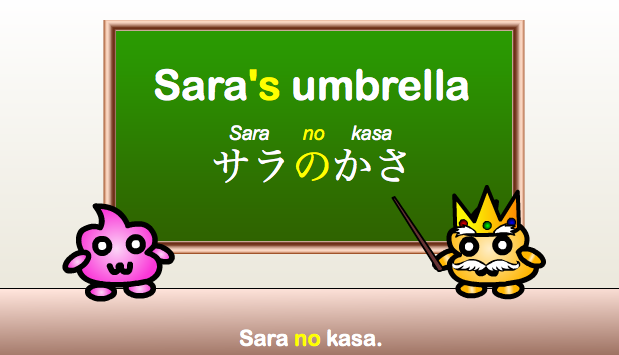
★ The Japanese particle の (no) when used as a possessive particle, is similar to the ‘s in English.
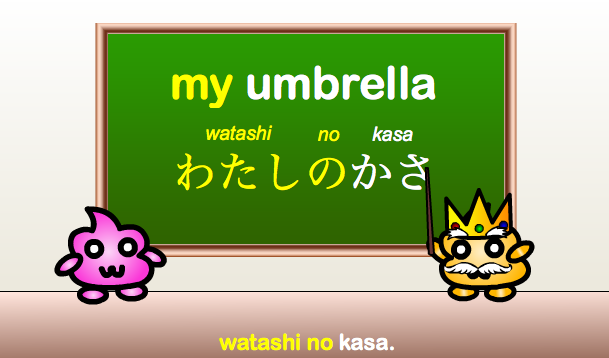
★ Although we change the form of the subject in English to make the possessive (he➡his, me➡my, Sara➡Sara’s) there is no need to change the form in Japanese. All you have to do is put the subject plus the particle の (no), and then the object that the person has.
★ Just as in English, this can be used for human relationships as well (ex. my dad, my friend). See more examples below.
…………………………………………………………………………………
Example 1:
今日はわたしのたんじょうびです。
Kyō wa watashi no tanjōbi desu.
Today is my birthday.
…………………………………………………………………………………
Example 2:
かのじょのねこはかわいいです。
Kanojo no neko wa kawaii desu.
Her cat is cute.
…………………………………………………………………………………
Example 3:
わたしのいもうとはしょうがくせいです。
Watashi no imōto wa shōgakusei desu.
My little sister is an elementary school student.
…………………………………………………………………………………
Example 4:
あれはかれのくるまです。
Are wa kare no kuruma desu.
That is his car.
…………………………………………………………………………………
Using the particle の (no) to tell location:
★ Telling location using the particle の is fairly easy, but you will need to know the vocabulary to do it. Here are some examples of this use of the particle の.
ベッドの上 Beddo no ue on the bed
つくえの下 Tsukue no shita under the desk
学校の近く Gakkō no chikaku near the school
私の前 Watashi no mae in front of me
いすの後ろ Isu no ushiro behind the chair
…………………………………………………………………………………
Thinking of の as the word of:
★ Sometimes it can be helpful to think of the particle の as the English word “of.”
★ The one thing you have to remember if you are going to think of it this way, is that the order of the words is opposite from English.
…………………………………………………………………………………
Example 1:
にほんごのほん
Nihongo no hon
Book of Japanese (Japanese book)
…………………………………………………………………………………
Example 2:
えいごのせんせい
Eigo no sensei
Teacher of English (English teacher)
…………………………………………………………………………………
Tips and advice:
Be careful!! You can not simply leave out the no and just say nihongo hon or eigo sensei.
★ Also, sometimes even if you reverse the order it will still make sense, but mean something completely different. Look what happens if we try to reverse one of the examples above.
…………………………………………………………………………………
Example 2 Reversed:
せんせいのえいご
Sensei no eigo
The teacher‘s English
…………………………………………………………………………………
Another use of the particle の:
★ Although this usage seems pretty different from the others that we have seen so far, it is still fairly simple.
★ In this usage, I guess you could think of の as a comma. It’s function is to bring the two nouns together to show a relationship.
…………………………………………………………………………………
Example 1:
ともだちのけいこさんです。
Tomodachi no keiko san desu.
This is my friend, Keiko.
…………………………………………………………………………………
Example 2:
クラスメイトのたなかさんにあいました。
Kurasumeito no tanaka san ni aimashita.
I met with my classmate, Tanaka.
………………………………………………………………………………..
Conclusion:
Today we learned about the Japanese particle の. We learned to use it to show possession or relationships between nouns, to tell location, and to modify or describe other nouns.
Although this is one of the easier particles to learn, there are a lot of ways you can use it so be sure to look over the review carefully!
If you have any questions about this lesson, or about Japanese in general, don’t hesitate to ask!
………………………………………………………………………………..
Get Japanese dictionary!
Do you want to know a lot of Japanese words? I recommend you to get a dictionary!
If you have dictionary, you can always look up new Japanese words\(◕ω◕)/♥
………………………………………………………………………………..
Do you want a Japanese tutor?
Take Japanese Skype Lessons with Professional Japanese Teachers on kakehashijapan.com!
………………………………………………………………………………..
………………………………………………………………………………..










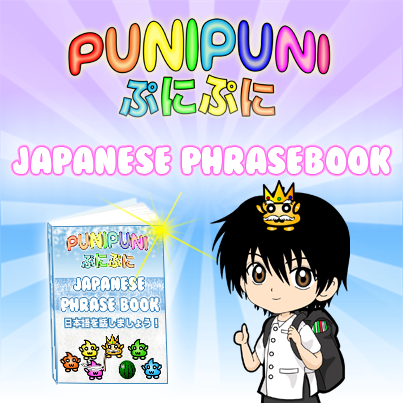

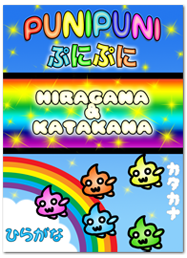
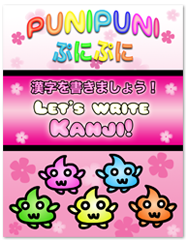


22 comments
Thank you sooo much. This helped me a lot!
Comment by Lennon on 10/03/2012 at 3:28 pmThanks a lot, it’s tremendously well explained!
Comment by Zara on 12/02/2012 at 8:46 pmHello !Please,help me !
Comment by Alina on 02/17/2013 at 1:37 pmHow to say – I lie on the bed .My little fluffy puppy Mark is under the stool .
Konnichiwa (◕ω◕)♪
I lie on the bed – 私はベッドの横たわった。(watashi wa beddo no yokotawatta)
My little fluffy puppy Mark is under the stool – 私のふわふわした子犬マークがいすの下にいる。(watashi no fuwafuwashita koinu māku ga isu no shita ni iru)
Comment by PuniPuni on 02/17/2013 at 6:55 pmHi, quick question, if I´m going to say: “My birthday is the 4th february”
Do I say: 私のたんじょうびは二月四日
Or am I saying it wrong?
Comment by Emmy on 03/31/2013 at 8:04 amYes, that is correct (◕ω<)♪
Comment by PuniPuni on 03/31/2013 at 9:17 amFor using the particle の as a comma can you say, kore wa watashi no tomodachi no keiko san desu.
Comment by Niara on 07/03/2013 at 12:39 pmi’m having a difficult time creating a sentence with の… i have an example question but the thing is i don’t even know how to answer the question itself if i’m given another question like this one…
それわ なんの ざっし てすか。
。。。 じどうしゃの ざっし です。
can you give me another 2 examples like this
Comment by ジョーン on 07/20/2013 at 8:56 pmit’s kind of hard, really.
It seems like you’re doing pretty well making sentences with の! \(◕ω◕)/♪
Some other examples that are similar to that? How about:
それは何の本ですか? (sore wa nan no hon desu ka?) What kind of a book is that?
Comment by PuniPuni on 07/21/2013 at 11:28 pmこれは日本語の本です。(kore wa nihongo no hon desu.) This is a Japanese book.
どうも ありがとう ございます!
Comment by ジョーン on 07/25/2013 at 1:56 amGreat! Arigato!
Comment by MayuChan on 02/15/2014 at 9:35 amThis page is so useful“
how to say “I have 2 siblings” during introducing??
Comment by xuan on 03/24/2014 at 10:50 pmYou can say: 私は兄弟が2人います。(watashi wa kyōdai ga futari imasu) (◕ω<)☆
Comment by PuniPuni on 04/03/2014 at 10:06 amif i met my classmate tanaka san is written like this Kurasumeito no tanaka san ni aimashita.
Comment by Noman on 07/25/2014 at 3:06 amthen how will one say i didn’t meet my class mate and did you meet your class mate
To make it a sentence, just add “ka” to the end. To make it a negative statement, just change the verb tense to negative form: aimashita ➡ aimasen deshita/ awanakatta desu.
Comment by PuniPuni on 08/01/2014 at 8:11 amWhy do we say:
ともだちのけいこさんです。
クラスメイトのたなかさんにあいました。
Doesn’t ともだちの = friend’s and
クラスメイトの = classmates’s?
Why do we not say
私のともだちけいこさんです。 or
私のクラスメイトたなかさんにあいました。
Thank You,
Comment by Cynthia on 10/24/2014 at 5:53 pmシンシア
The particle の is not only used to indicate possession. So, if you say ともだちのかばん (my friend’s bag) in this sentence の is being used to show possession. However, in the examples that you are giving, it is not used to show possession.
If this is very difficult, it is also possible to say the same thing like this:
私のともだち、けいこさんです。
私のクラスメイト、たなかさんにあいました。
Just add a comma and then you don’t have to use the particle の in this type of sentence.
Comment by PuniPuni on 10/30/2014 at 9:20 amAre there abbreviations in Japanese, like ‘it’s’ and ‘I’m’?
Comment by Orrik on 11/04/2014 at 1:53 pmNo, there are no contractions such as these in Japanese. The “I’m ___” or “It’s ___” actually follows a different sentence order in Japanese: 〜は〜です。 (____wa___desu.)
For example: “I’m John” in Japanese is 私はジョンです。(watashi wa jon desu)
Please check out these lessons for more information:
Comment by PuniPuni on 11/25/2014 at 4:50 amhttp://www.punipunijapan.com/grammar-lesson-1-a-is-b/
http://www.punipunijapan.com/punipuni-lesson1-self-introduction/
this is so very very very helpful..
Comment by Kaullin Paul Paulo on 11/06/2014 at 9:13 amHello! I had a question. What does it mean when の is used at the end of a sentance. I see this a lot, and Im nit sure what it means. Is it something like “…でよ?” Please and thank you! -Bert
Comment by Bert! on 01/09/2015 at 4:25 pmThere can actually be different meanings, depending on the sentence. When の is used at the end of a sentence, it means that the sentence is in casual form. It is often used to ask casual questions. For example 何してるの?(nani shiteru no?) – “What are you doing?” If you would like clarification on any specific sentences, let me know!
Comment by PuniPuni on 01/27/2015 at 6:06 am